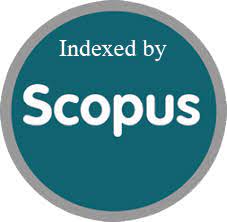Effects of Writing Position on Handwriting in Forensic Analysis
DOI:
https://doi.org/10.52783/jns.v14.3962Keywords:
Handwriting Traits, Writing Positions, Factors affecting handwriting, Variations in handwriting traitsAbstract
Handwriting is a distinct characteristic influenced by individual motor skills, cognitive aptitude, and surrounding circumstances. Forensic handwriting analysis is critical in determining the authenticity of documents, especially in legal conflicts involving contested wills or contracts. The study collected 180 handwriting samples from 60 individuals, each writing in three different positions on plain A4 paper with a Reynolds Ballpoint pen (0.7mm). The primary handwriting qualities examined were writing slant, alignment, letter size, fluency, letter spacing, and pen pressure. Statistical analysis was used to see if writing position had any effect on these characteristics. The findings revealed no significant variation in slant or alignment across different writing positions. However, there were significant changes in letter size, fluency, spacing between letters, and pen pressure. The findings indicate that, whereas body position has little effect on slant or alignment, it does have a significant impact on letter size, fluency, spacing, and pen pressure. Furthermore, variations in writing position might have an impact on various handwriting traits that should be taken consideration during forensic document inspection. This study helps understand handwriting diversity and highlights the relevance of body posture in forensic investigation.
Downloads
Metrics
References
Levinson, J. (2000). Questioned documents: A lawyer's handbook. Academic Press.
Huber, R. A., & Headrick, A. M. (1999). Handwriting identification: facts and fundamentals. CRC press.
Koppenhaver, K. M. (2007). Forensic document examination: principles and practice.
Held, D. A. E. (2001). Handwriting, typewriting, shoeprints, and tire treads: FBI Laboratory's questioned documents unit. Forensic Science Communications, 3(2).
Fisher J, Maredia A, Nixon A, et al. (2012) Identifying Personality Traits, and Especially Traits Resulting in Violent Behavior through Automatic Handwriting Analysis. Proceedings of Student-Faculty Research Day, CSIS, Pace University, USA, 1951; p. 1‒8.
Grant, Julius (1974). The Effect of Posture on a signature. Presented at the meeting of the International Association of Forensic Science (London).
Vos, M., Strach, S., & Westwood, P. (2000). DOCUMENT ANALYSIS| Handwriting.
Smith, A., & Hayes, C. (2022). The impact of body position on the legibility and consistency of handwritten text: A comparative study. Journal of Handwriting Research, 10(2), 105-118.
Osborn, A.S. (1929), Questioned Documents, Nellon Hall Pub.
Koppenhaver, K. M. (2007). Forensic document examination: principles and practice.
Sharma B. R., Handwriting Forensics, Second Edition, Universal law Publishing, 2017.
Srihari, S. N., Srinivasan, H., & Desai, K. (2007). Questioned document examination using. Journal of Forensic Document Examination, 18, 1-20
Liu, M., Zhang, X., & Yao, L. (2020). The effect of body posture on signatures: A comparison of seated and prone positions. Forensic Science International, 303, 109980.
Mayther J. (1996). The Influence of Writing Instruments on Handwriting and Signatures, Journal of Criminal Law, Criminology and Police Science, March; 60:1: pp 102-112.
Brown, Christopher David W.P. (1985). The Identification of Handwriting on a Convex Surface, Presented of the meeting of the American Academy of Forensic Sciences, Las Vegas.
Zhou, L. (2019). Effects of body position on writing speed and pressure variability: A comparison of seated, standing, and lying positions. Ergonomics Review, 14(1), 54-62. https://doi.org/10.1007/s10974-019-0872-5
Sciacca, F., Lupo, D., & De Luca, R. (2017). Posture and handwriting variability: An analysis of seated, standing, kneeling, and prone writing positions. Human Factors and Ergonomics, 28(2), 275-283.
Kim, J., Park, S., & Choi, D. (2016). Effects of body position on handwriting legibility and pressure consistency. Journal of Human Factors and Ergonomics, 58(3), 332-338.
Steinmetz, M., Johnson, L., & Roberts, C. (2015). The effect of posture on handwriting legibility: A controlled study of sitting and standing. Journal of Motor Behavior, 47(1), 18-24.
Sanders, S., Davis, C., & Taylor, A. (2014). The impact of body posture on writing pressure and handwriting quality in children. Educational Psychology Review, 26(4), 685-698.
Kumar, R., & Patel, S. (2024). The influence of body posture on handwriting variability: A study of sitting, standing, and lying positions. Journal of Tablet Computing, 39(1), 1-10.
Rosenberg, L., & Daugherty, J. (2022). Forensic implications of body posture on handwriting: A study of seated, standing, and prone positions. Journal of Forensic Document Examination, 45(2), 211-220.
Miller, A., Green, T., & Bennett, J. (2021). How prone versus seated positions affect handwriting legibility: A comparative study. Handwriting Research Journal, 32(4), 85-92.
Grasso, C., Gallo, M., & Miller, R. (2018). The effects of different writing postures on handwriting pressure and legibility. Applied Ergonomics, 70, 147-153.
Bartz, S., & Herz, M. (2017). Influence of body posture on the pressure and legibility of handwriting. Journal of Ergonomics, 52(4), 763-772.
Dziedzic, J. (2015). The influence of lying body position on handwriting. Journal of Handwriting Research, 5(3), 101-115.
Downloads
Published
How to Cite
Issue
Section
License

This work is licensed under a Creative Commons Attribution 4.0 International License.
You are free to:
- Share — copy and redistribute the material in any medium or format
- Adapt — remix, transform, and build upon the material for any purpose, even commercially.
Terms:
- Attribution — You must give appropriate credit, provide a link to the license, and indicate if changes were made. You may do so in any reasonable manner, but not in any way that suggests the licensor endorses you or your use.
- No additional restrictions — You may not apply legal terms or technological measures that legally restrict others from doing anything the license permits.










